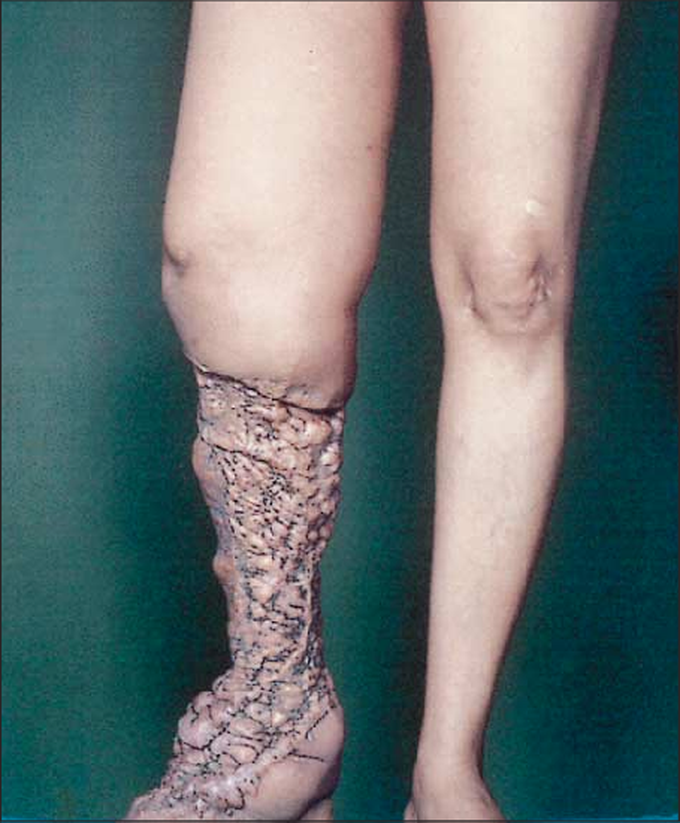


A complication of debulking surgery for lymphedema
plication. Bypass Procedures. Bypass procedures are only per- formed in selected cases; this is reflected in the litera- ture by small patient numbers in the series reported. These microsurgical procedures are reserved for patients in whom intensive combined medical therapy has not pro- duced clinical improvement. Lymphatic-venous anasto- mosis can only be performed in the presence of a com- petent venous system and intact lymphatic structures, such as patent regional lymphatics and lymph nodes. 101 Nielubowicz and Olszewski 102 first attempted lym- phovenous anastomosis in the treatment of lymphe- dema. Unfortunately, this early technique was noted to occlude owing to venous thrombosis at the anastomotic site or to reendothelialization over the cut anastomotic surface of the lymph node. 103 With refinement in the tech- nique, direct end-to-side lymphatic-venous anastomo- sis can be performed. 103 This technique avoids venous re- flux into the lymphatics, seen with the end-to-end technique, and thus decreases the risk of venous throm- bosis. Also, by using a secondary tributary of the main vein as the site of anastomosis, the risk of anastomotic stricture is avoided. For the smaller pediatric patients, lymphatic capsule-venous anastomosis is possible. 103 In another series of 15 patients who underwent lym- phovenous bypass, there was a reduction of more than 5 cm in leg diameter in 9 (70%) of 13 patients followed up for an average of 6 months, 104 while Struick and cowork- ers 105 reported that 5 of 8 patients operated on demon- strated significant improvement. There was also a signifi- cant reduction in the postoperative incidence of cellulitis in both studies. In a larger study (91 patients), Huang and coworkers 106 showed that after a mean follow-up of 2 years, this procedure led to a reduction in limb diameter of more than 3 cm in 79.1% of patients. Only 4 patients were un- able to undergo the bypass procedure because of fibrosis and thus lack of a suitable lymphatic vessel. Ipsen and coworkers 107 found that lymphovenous bypass reduced limb circumference by 0.8 to 4.1 cm if the bypass was performed for secondary lymphedema, but there was no real difference seen if the procedure was performed for primary lymphedema. In the presence of coexisting venous disease, seg- mental lymphatic autotransplantation has been per- formed with successful results 108,109 but is rather tedious and is associated with secondary lymphedema at the op- erative site. Another shunting procedure for use in the presence of coexisting venous disease is autologous interposition vein grafting. 110 This involves direct lymphatic-venous- lymphatic anastomosis. However, like lymphatic-venous bypass, severe hypoplasia, aplasia of lymphatics or lymph nodes, or extensive damage to the superficial and deep lymphatics are contraindications to the procedure. The only surgical alternative for these patients with exten- sive lymphatic damage and coexisting venous disease is a debulking procedure. Tanaka and coworkers 111 attempted adipolymphati- covenous transfer, which uses the long saphenous vein along with its lymphatics.

